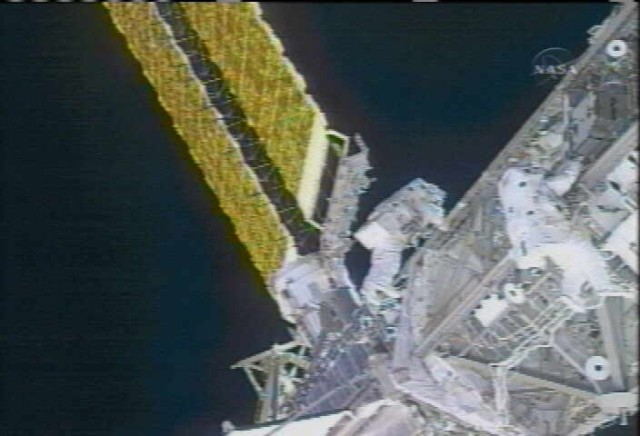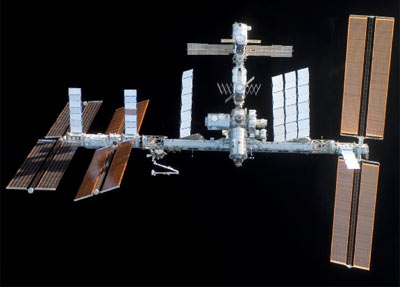A new crew that will live and work aboard the International Space Station rocketed into orbit early Sunday aboard a Soyuz spacecraft. U.S. astronaut E. Michael Fincke, Russian cosmonaut Yury Lonchakov and Richard Garriott, a U.S. computer game developer, lifted off from the Baikonur Cosmodrome in Kazakhstan at 2:01 a.m. CDT.
Fincke, the only American to launch twice on a Soyuz, will serve as commander of the six-month Expedition 18 mission. The mission’s main focus will be preparing the station to house six crew members on long-duration missions.
The Expedition 18 crew is scheduled to arrive at the station Tuesday, with docking to the Zarya module scheduled for 3:33 a.m. After the hatches are opened, Expedition 17 Commander Sergey Volkov and spaceflight participant Garriott will become the first children of previous space fliers to greet each other in orbit. Garriott is the son of former NASA astronaut Owen Garriott, who was a member of the Skylab-3 crew in 1973. Volkov is the son of veteran cosmonaut Alexander Volkov, who flew three Soyuz missions.
Garriott will spend nine days on the station under a commercial agreement with the Russian Federal Space Agency. He will return to Earth on Oct. 23 with Volkov and Expedition 17 Flight Engineer Oleg Kononenko, who have worked aboard the station since April 10.
Expedition 17 Flight Engineer Greg Chamitoff, who arrived at the station in June, will be replaced in November by NASA astronaut Sandra Magnus. Space shuttle Endeavour will deliver Magnus and return Chamitoff to Earth.
Endeavour’s November STS-126 mission also will deliver equipment to the station necessary for supporting a six-member crew, including a water recycling system, sleeping quarters, a new kitchen, a second toilet, and an advanced exercise device.
Although they will be in space on Election Day, Chamitoff and Fincke have arranged for the chance to cast their ballots from the station.
Reproduced from JSC News. To obtain it directly, follow the procedure outlined below:
NASA Johnson Space Center Mission Status Reports and other information are available automatically by sending an Internet electronic mail message to listserv@listserver.jsc.nasa.gov. In the body of the message (not the subject line) users should type “subscribe hsfnews” (no quotes). This will add the e-mail address that sent the subscribe message to the news release distribution list. The system will reply with a confirmation via e-mail of each subscription. Once you have subscribed you will receive future news releases via e-mail. To unsubscribe, send an e-mail to listserv@listserver.jsc.nasa.gov with the following command in the body of your e-mail message: “unsubscribe hsfnews” (no quotes) or from another account, besides the account used to subscribe: “unsubscribe hsfnews youremail@yourdomain.com” (no quotes).










